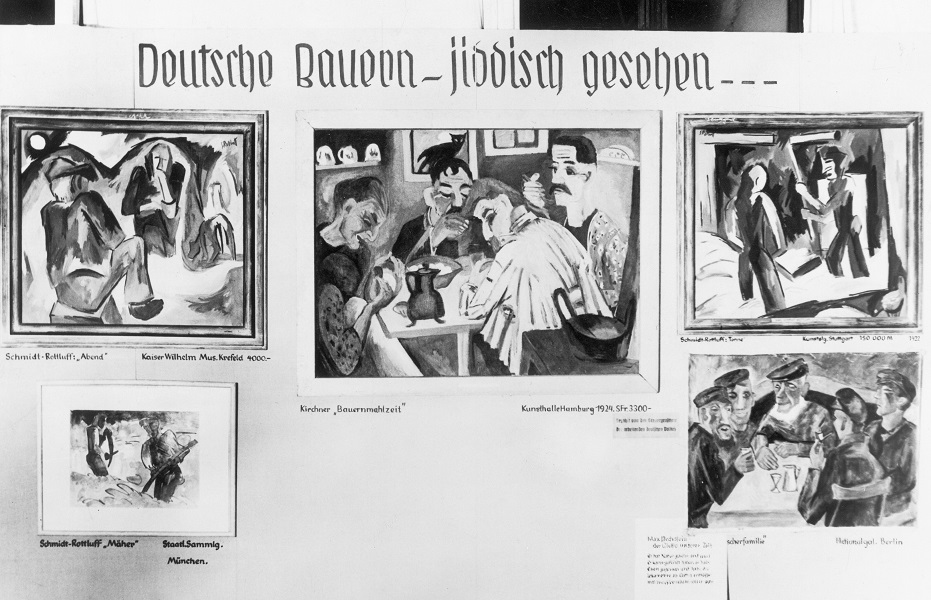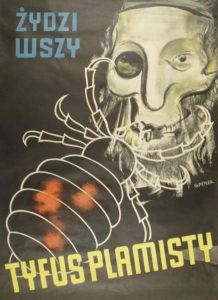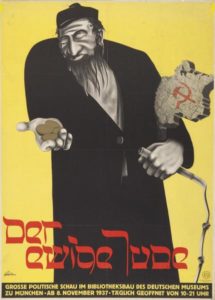We began class with two images: What do you think you see?
The responses sounded uncertain, a few surprised giggles here and there.Were those toys; were they grenades of some kind? That has to be Hitler, why are there two Santa Clauses? Is that a lightsaber?
ccccThis session continued where the last had stopped, on the subject of Nazi propaganda in Germany, moving from blatant party posters to infiltration into everyday aspects of life: news media; art—music, visual art including films, literature including children’s literature; school textbooks; radio and popular religious cultural festivals such as Christmas.

“German Peasants – From a Jewish Perspective” (1937). The photo shows the supposedly distorted representation of German peasants by the “Jewish-Bolshevist” artists Ernst Ludwig Kirchner, Max Pechstein, and Karl Schmidt-Rottluff, three leading representatives of German Expressionism.
ccccThe idea of a Nazi Christmas caused some surprise among the students. It didn’t quite fit in with their idea of what life in Nazi Germany may have been like. We studied how art in Nazi Germany was a potent propaganda medium, to the extent that exhibitions showcasing the Nazi idea of ‘degenerate art’ were put up in temporary establishments outside State-run galleries that housed nationalist art upholding the glory of the Fatherland. Music was not spared either, with jazz being denounced as entartete – racist posters announcing the same—even though this did not always work in accordance with Nazi plans. The increasing popularity of the still novel radio was tapped into with the manufacture of the affordable Volksempfänger, that went on to become an open propaganda machine.
ccccI shared examples of mathematical sums and sections of Biology chapters on genetics with the students and we discussed how even areas popularly considered beyond politics—such as science and maths were seamlessly incorporated in this fascist project.
Before concluding class, we spent a little time analysing posters depicting Jews in Nazi Germany. What impressions were seeing these posters leaving on them?
Evil, dirty, thieves, unreliable were some answers.
Would you start to believe these messages if this were about people you’ve grown up with and around? The ‘no’ was almost immediate. We decided to later address the question of how so many people did start believing these messages about people they had been familiar with all their lives.
For the next class I gave the students an assignment. They would have to make groups of 4 each, after which each group would pick a ‘positive’ and a ‘negative’ cause of their choice that they would then have to create propaganda for, using whatever medium they wished to.






